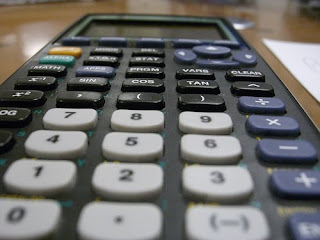Point of Total Assumption (PTA) - Interesting Facts (PMP)
 Point of Total Assumption (Part 4): In this article, we’ll learn some interesting facts about Point of Total Assumption (PTA) by working through some numerical problems. Before you read further, I suggest you review the PTA Formula.
Point of Total Assumption (Part 4): In this article, we’ll learn some interesting facts about Point of Total Assumption (PTA) by working through some numerical problems. Before you read further, I suggest you review the PTA Formula.
Formula for Point of Total Assumption (PTA)Permalink
Following is the formula for calculating PTA:
PTA = (Ceiling Price - Target Price) / BSR + Target Cost
PTA Sample Questions Set 1Permalink
Given the information below:
Target Cost: $60,000
Target Fee: $15,000
Target Price: $75,000
Ceiling Price: $100,000
Buyer-Seller Share Ratio: 60:40
- Q1.1 What is the PTA?
- Q1.2 How much does the buyer pay when the actual cost reaches PTA?
- Q1.3 How much profit/loss does the seller make when actual cost reaches PTA?
Solution:Permalink
A1.1 By substituting the values in the PTA formula above, we get:
PTA = (100,000 - 75,000) / 0.6 + 60,000 = 25,000 / 0.6 + 60,000 = 41,666 + 60,000 = $101,666
A1.2 Cost overrun = 101,666 - 60,000 = 41,666
Buyer share ratio (BSR) = 60% or 0.6 Buyer’s share of cost overrun = Cost overrun x BSR = 41,666 * 0.6 = 25,000 Amount buyer pays at PTA = Target Price + Buyer’s share of cost overrun = 75,000 + 25,000 = $100,000 (= Ceiling Price)
From here on, even if the actual cost rises to $150,000 (or more), buyer still pays $100,000 only. Do you know what this implies? Refer the conclusion section at the end of this post.
A1.3 The amount seller spent (actual cost) = $101,666
The amount seller received = the amount buyer pays = $100,000 So, the amount seller makes = 100,000 - 101,666 = - $1,666 (net loss).
So, in this case, seller is already in losses when the cost reaches PTA.
Now, let’s modify the terms of the contract slightly.
PTA Sample Questions Set 2Permalink
Target Cost: $60,000
Target Fee: $15,000
Target Price: $75,000
Ceiling Price: $80,000
Buyer-Seller Share Ratio: 60:40
- Q2.1 What is the PTA?
- Q2.2 How much does the buyer pay when the actual cost reaches PTA?
- Q2.3 How much profit/loss does the seller make when actual cost reaches PTA?
Solution:Permalink
A2.1 By substituting the values in the PTA formula above, we get:
PTA = (80,000 - 75,000) / 0.6 + 60,000 = 5,000 / 0.6 + 60,000 = 8,333 + 60,000 = $68,333
A2.2 Cost overrun = 68,333 - 60,000 = 8,333
Buyer share ratio (BSR) = 60% or 0.6 Buyer’s share of cost overrun = Cost overrun x BSR = 8,333 * 0.6 = 5,000 Amount buyer pays at PTA = Target Price + Buyer’s share of cost overrun = 75,000 + 5,000 = $80,000 (= Ceiling Price)
A2.3 The amount seller spent (actual cost) = $68,333
The amount seller received = the amount buyer pays = $80,000 So, the amount seller makes = 80,000 - 68,333 = + $11,666 (net profit).
So, in this case, seller is making some profit even when the actual cost reaches PTA.
Key Takeaways about PTAPermalink
- PTA can be more than the Ceiling Price.
- At or above PTA, buyer pays the Ceiling Price.
- At or above PTA, the contract price is fixed, and is equal to the Ceiling Price.
- At PTA, Buyer-Seller share ratio becomes 0:100.
- At PTA, a Fixed Price Incentive Fee (FPIF) contract becomes a Firm Fixed Price (FFP) contract.
- PTA doesn't mean point of zero profit for the seller. At PTA, seller may be making profit or loss, or no profit and no loss.
- Beyond PTA, all costs on the project are completely borne by the seller.
- Seller is usually more concerned about the PTA.
If you found these posts useful, do post your comments and let me know.
- Point of Total Assumption (PTA) - Introduction
- The Point behind Point of Total Assumption in FPIF Contracts
- Derivation of Point of Total Assumption (PTA) Formula
- Point of Total Assumption (PTA) - Interesting Facts (PMP) (you are here)
- Seller Fee Calculations in FPIF Contract
Image credit: Flickr / islandfreedom
46 Comments
Mangesh Lolge
Harwinder Singh
Mangesh Lolge
Anonymous
Harwinder Singh
Dave
Harwinder Singh
Vikram Pampati
Harwinder Singh
Anonymous
Harwinder Singh
Anonymous
Harwinder Singh
mlopez
Anonymous
Harwinder Singh
Harwinder Singh
Anonymous
Anonymous
Anonymous
Harwinder Singh
Anonymous
Henry
Harwinder Singh
Harwinder Singh
Anonymous
Anonymous
Anonymous
Harwinder Singh
Anonymous
Harwinder Singh
Anonymous
Anonymous
SSPAWAR
Harwinder Singh
Harwinder Singh
SSPAWAR
Abhinav Praneet
Harwinder Singh
Steven
Anonymous
Harwinder Singh
Harwinder Singh
Ps
Harwinder Singh
George Palmer